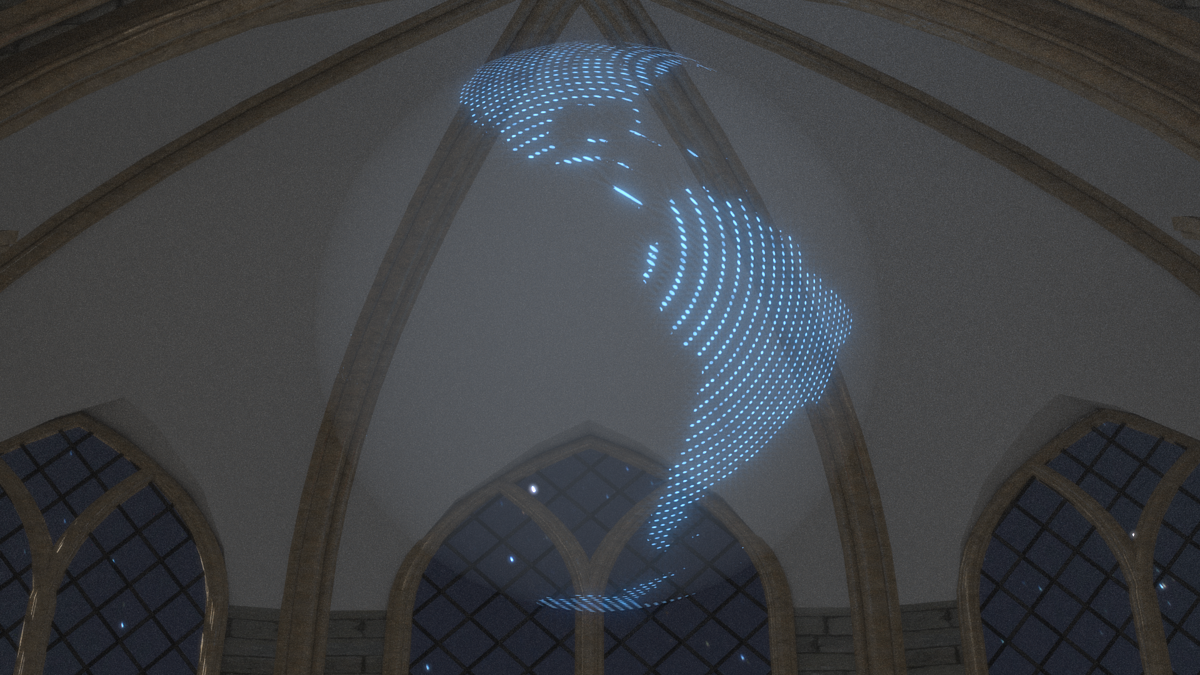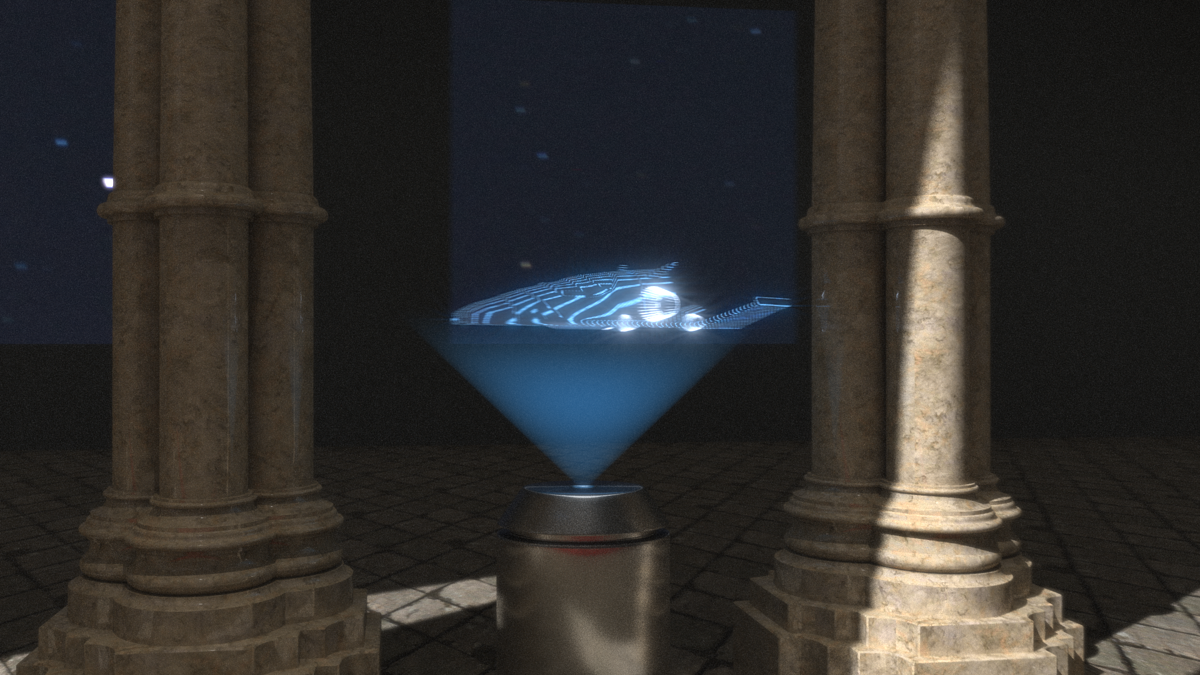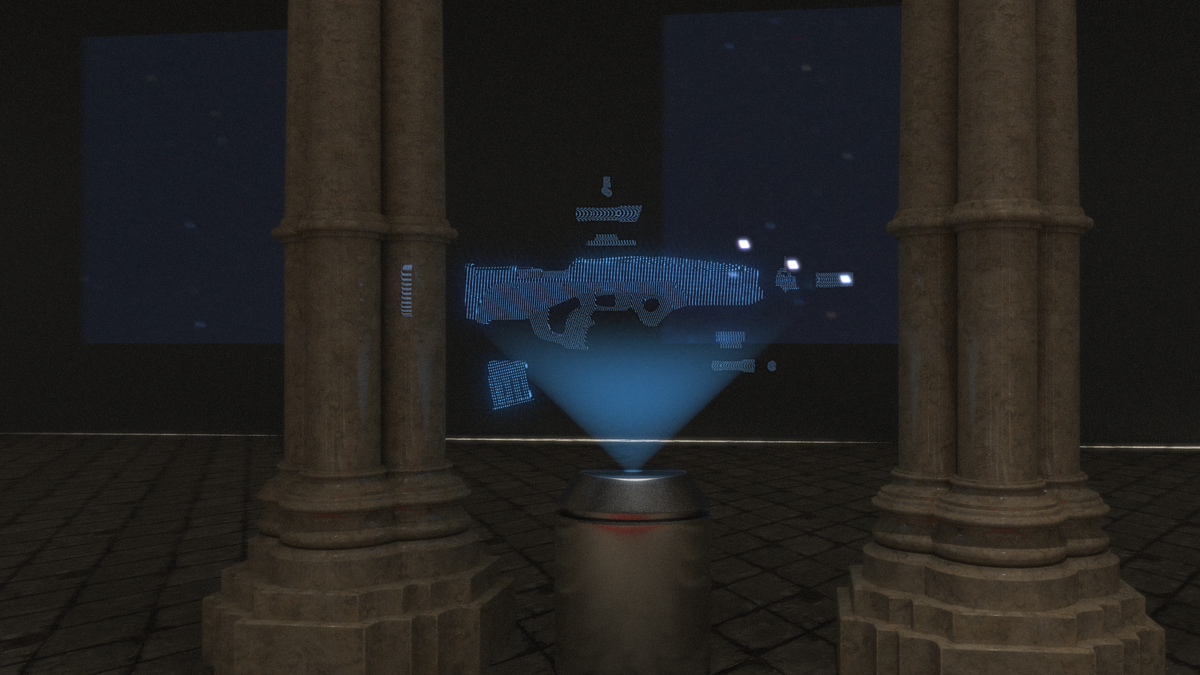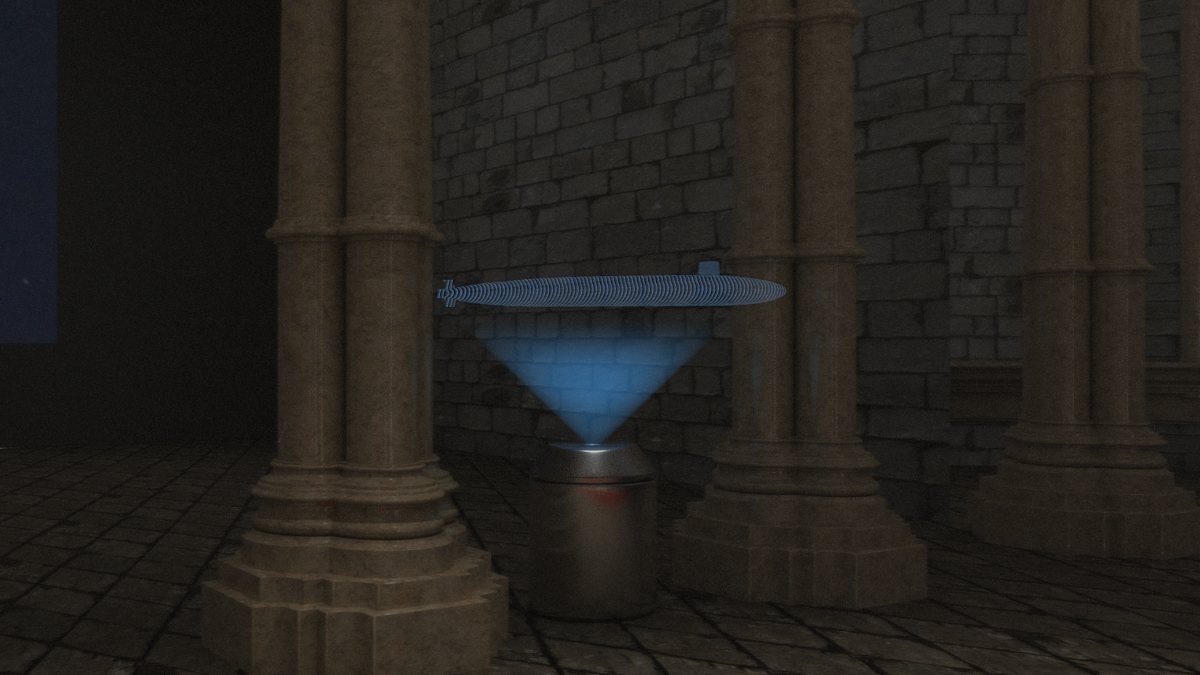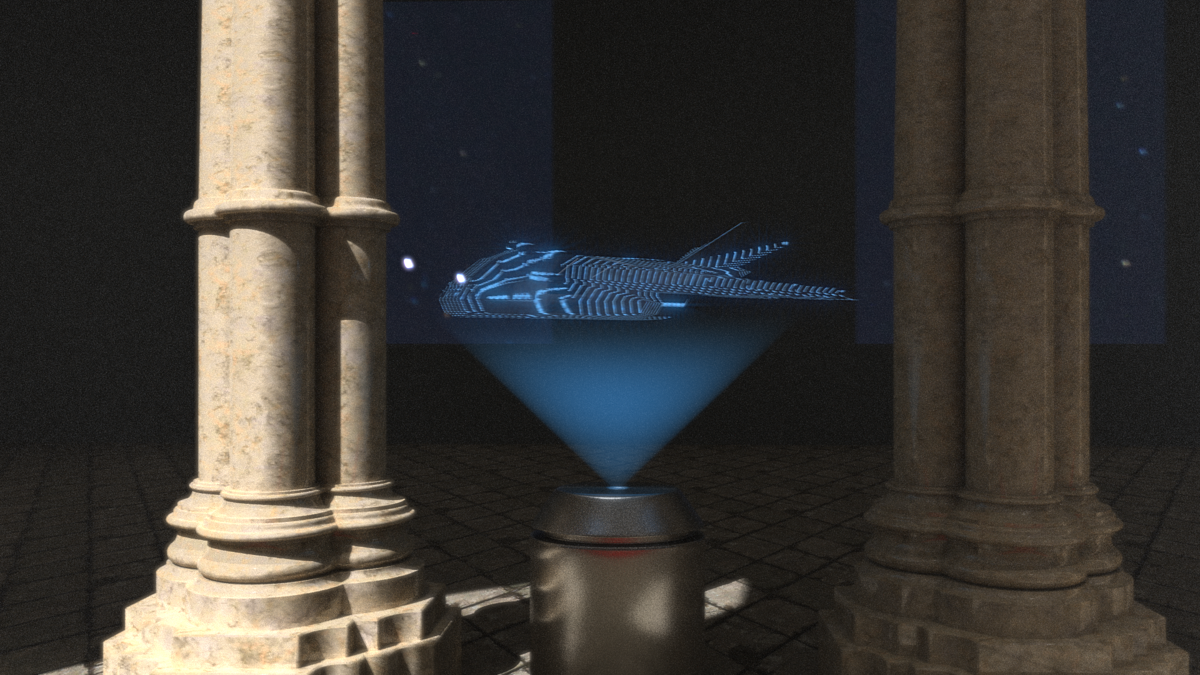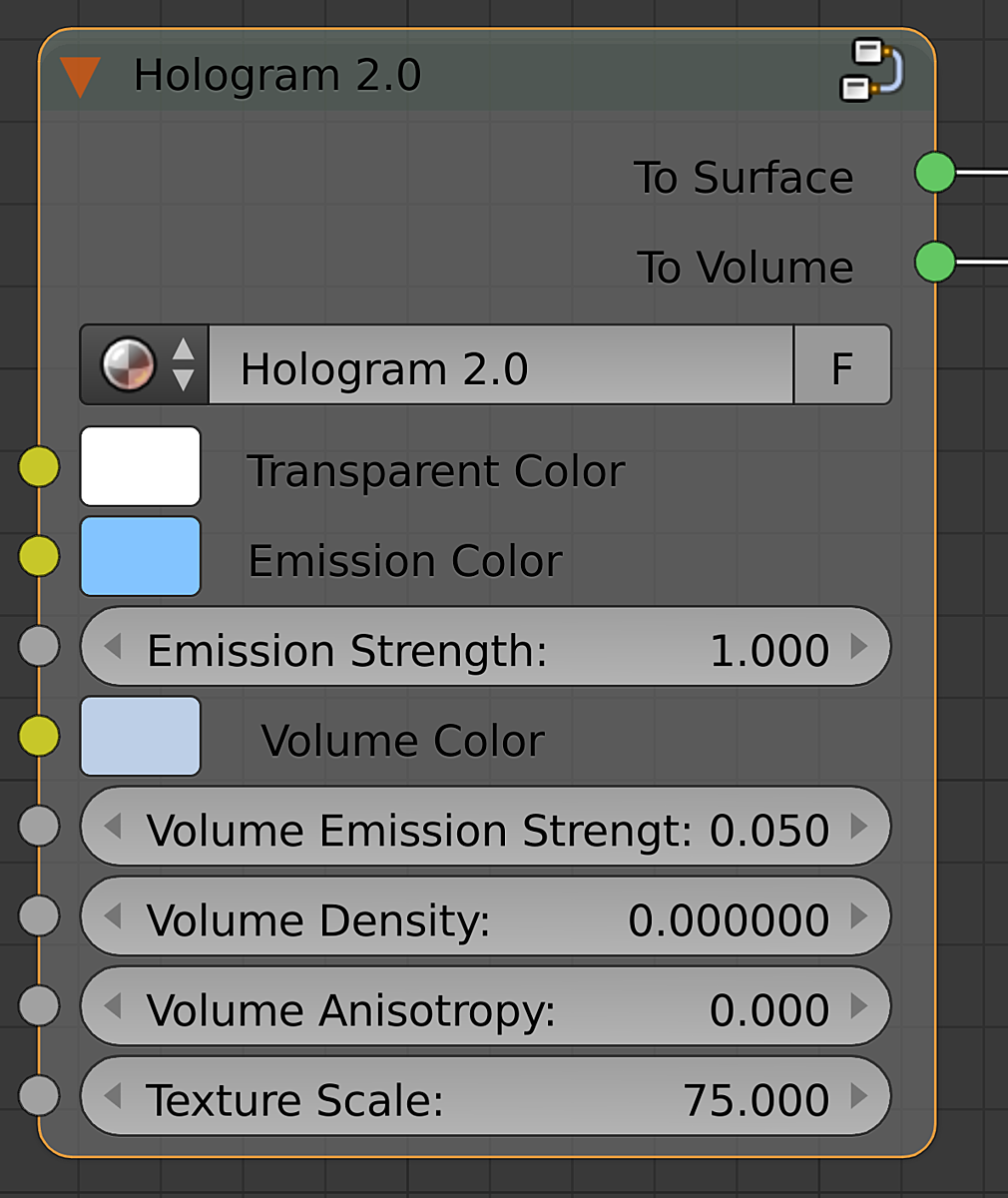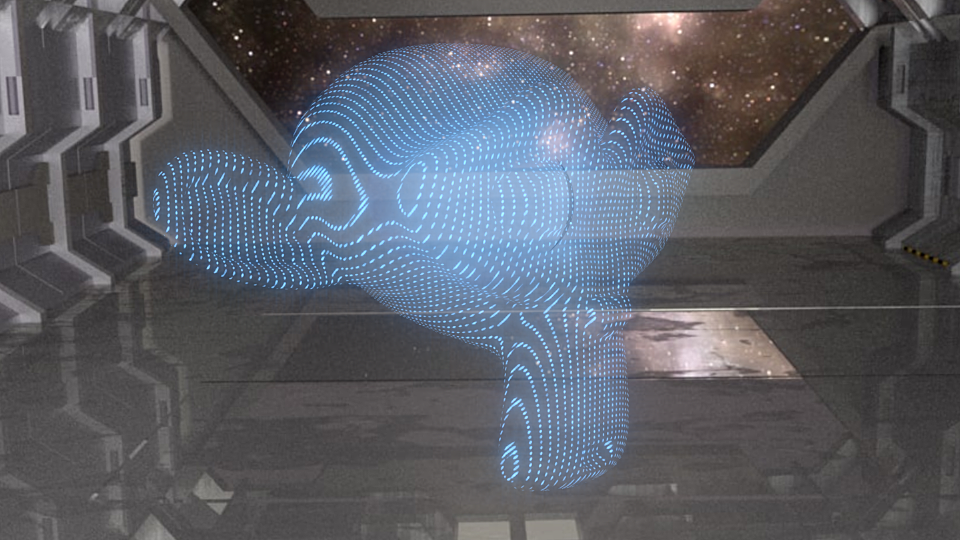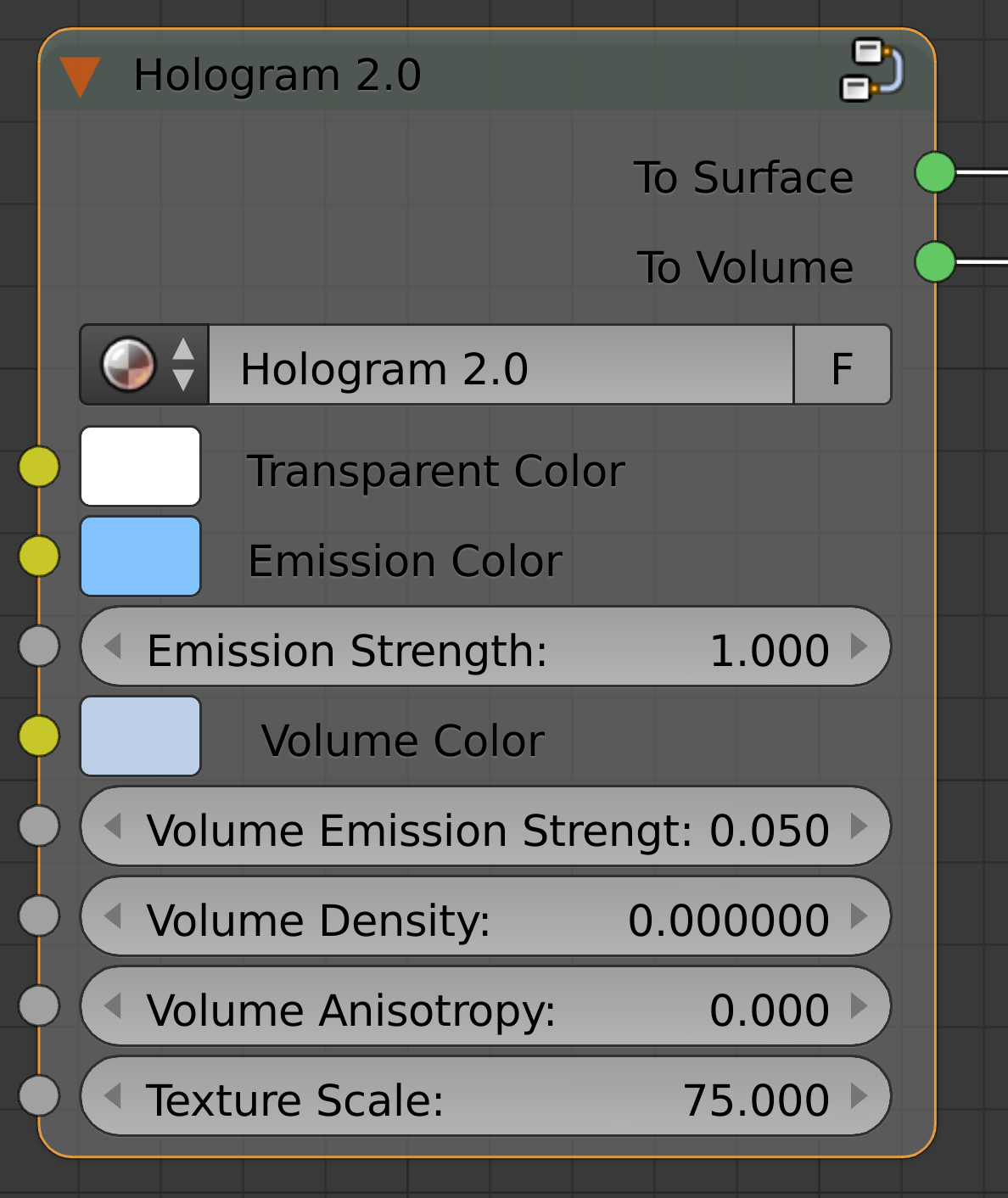Hologram 2.0
ATTENTION! As of May 2023 customer support for Hologram 2.0 will end and the product will be offered at the lowest price possible.
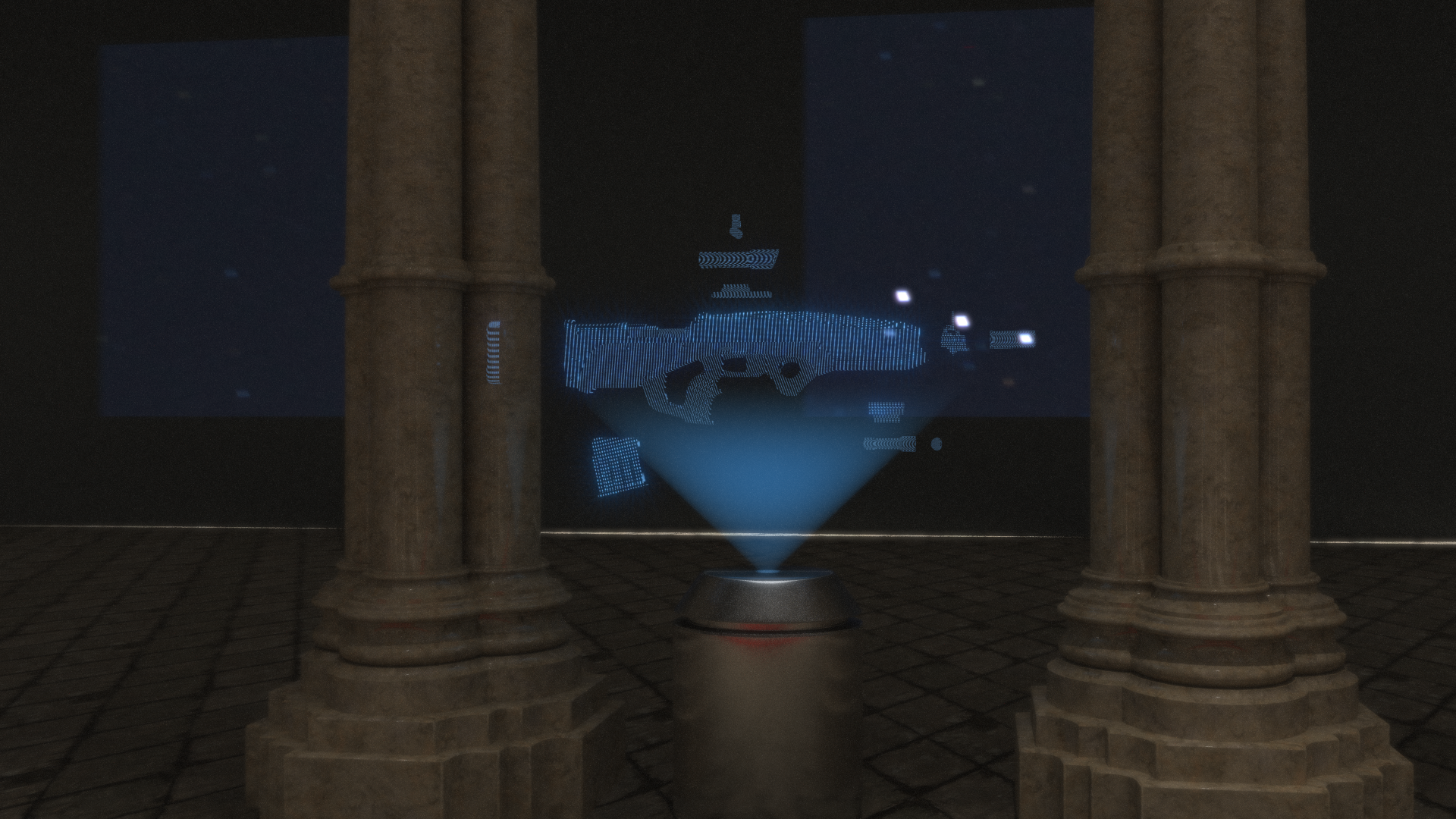
Hologram 2.0
Have you ever wanted to create Hollywood style hologram effects? Hologram 2.0 was built from the ground up based on 3D hologram effects found in movies. Hologram 2.0 works by placing small dots over the surface of the model to give the effect of small points of light being projected in the air. This is similar to pixels in a screen. These 'hologram pixels' are placed independently of the number of vertices in the model. This means that you could have a flat plane and still have as many 'hologram pixels' on it as you want. This means that you can use this on low poly models without affecting the quality of the hologram shader unlike other products on the market.
In addition to the 'hologram pixels' the shader also has volumetric effects which emit light to give a stronger impression of three dimensions. This effect can easily be turned on and off by disconnecting the "To Volume" output.
Hologram 2.0 can also be combined with image textures to tell Blender where to put the 'hologram pixels'. Such as...
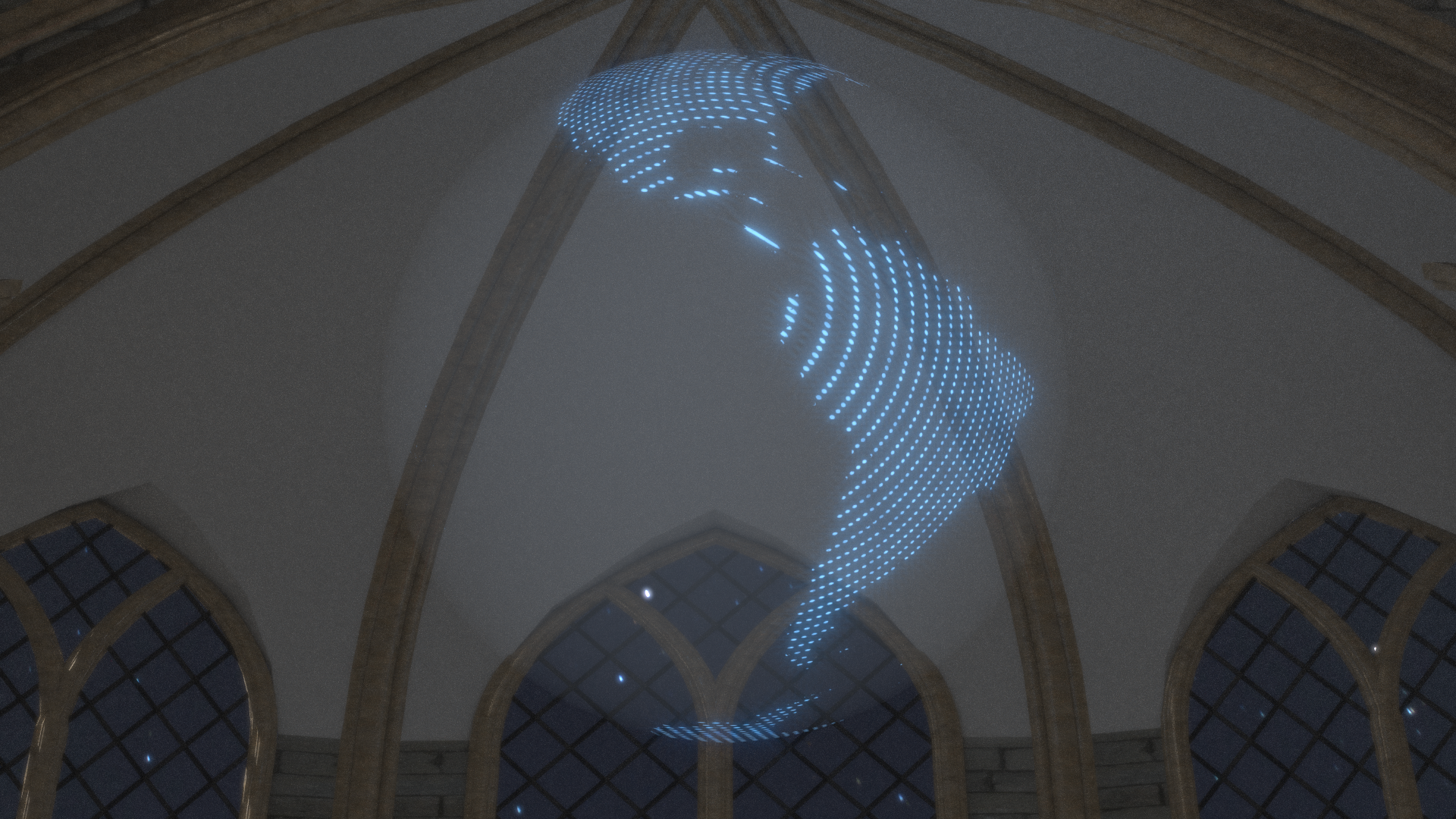
In this image, you can clearly see the volumetric effect as well. Also if you look closely at South America you will notice that not all the 'pixels' have the same emission strength. This is done on purpose to add a small amount of randomness like you would see in a real world hologram.
Hologram 2.0 can also be used on highly complex models which are composed of smaller individual models such as the gun at the top.
The procedural texture which the material is based on can be scaled easily to fit the size of the model you are applying it to. This texture controls the size of the 'hologram pixels'.
Hologram 2.0 is completely procedural and packaged in one easy to use node group.
Transparent Color
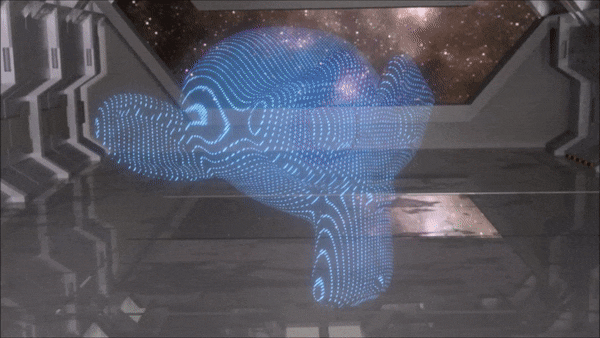
This changes the color of the space in between the 'hologram pixels'. It is set to white by default.
Emission Color
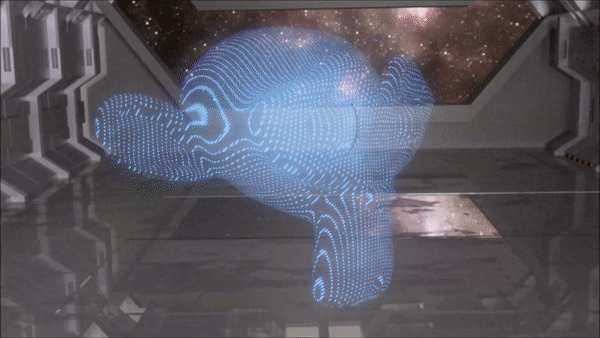
This changes the color of the 'hologram pixels'.
Emission Strength
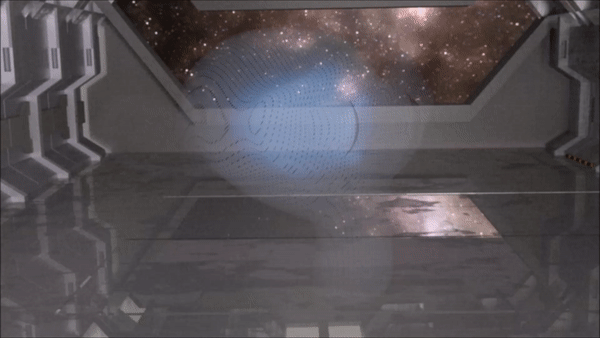
This changes the brightness of the 'hologram pixels'.
Volume Color
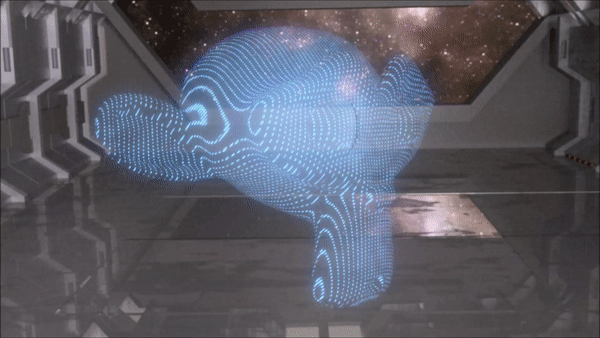
Changes the color of the volumetric effect.
Volume Emission Strength
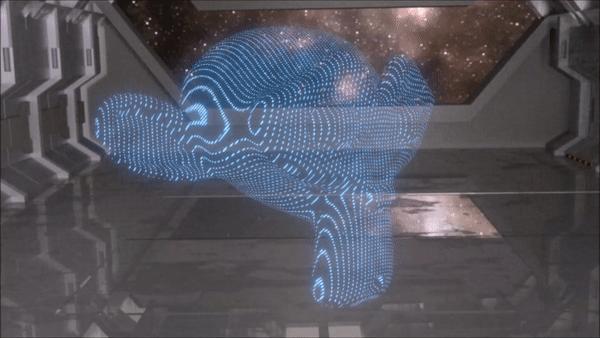
Changes the amount of light the volume emits.
Volume Density
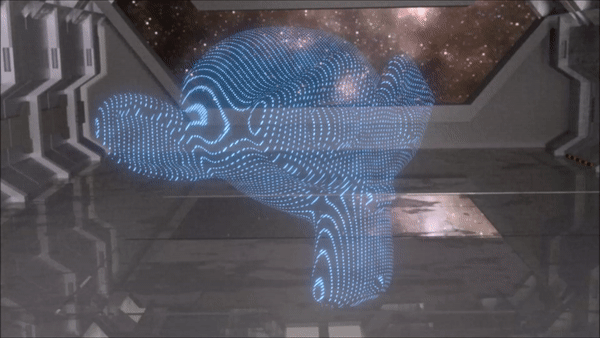
Changes the density of the volumetric effect. It is recommended to keep this setting very low.
Volume Anisotropy
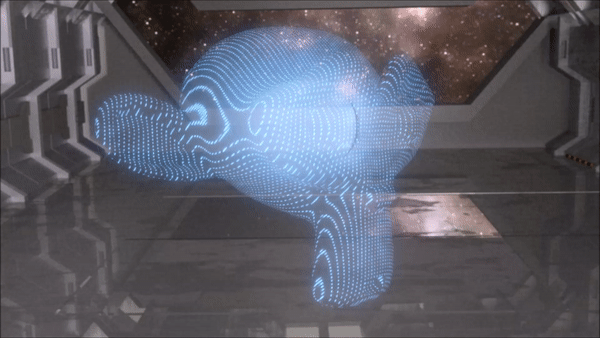
Controls the look of the volume scatter effect depending on the direction of the light passing through it.
Texture Scale
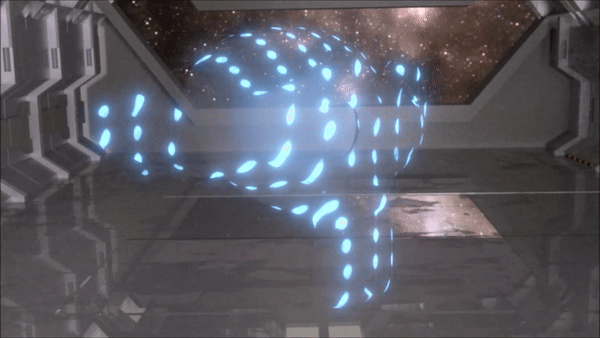
Scales the procedural texture which the shader is based on so that you can change the size of the 'hologram pixels'.
